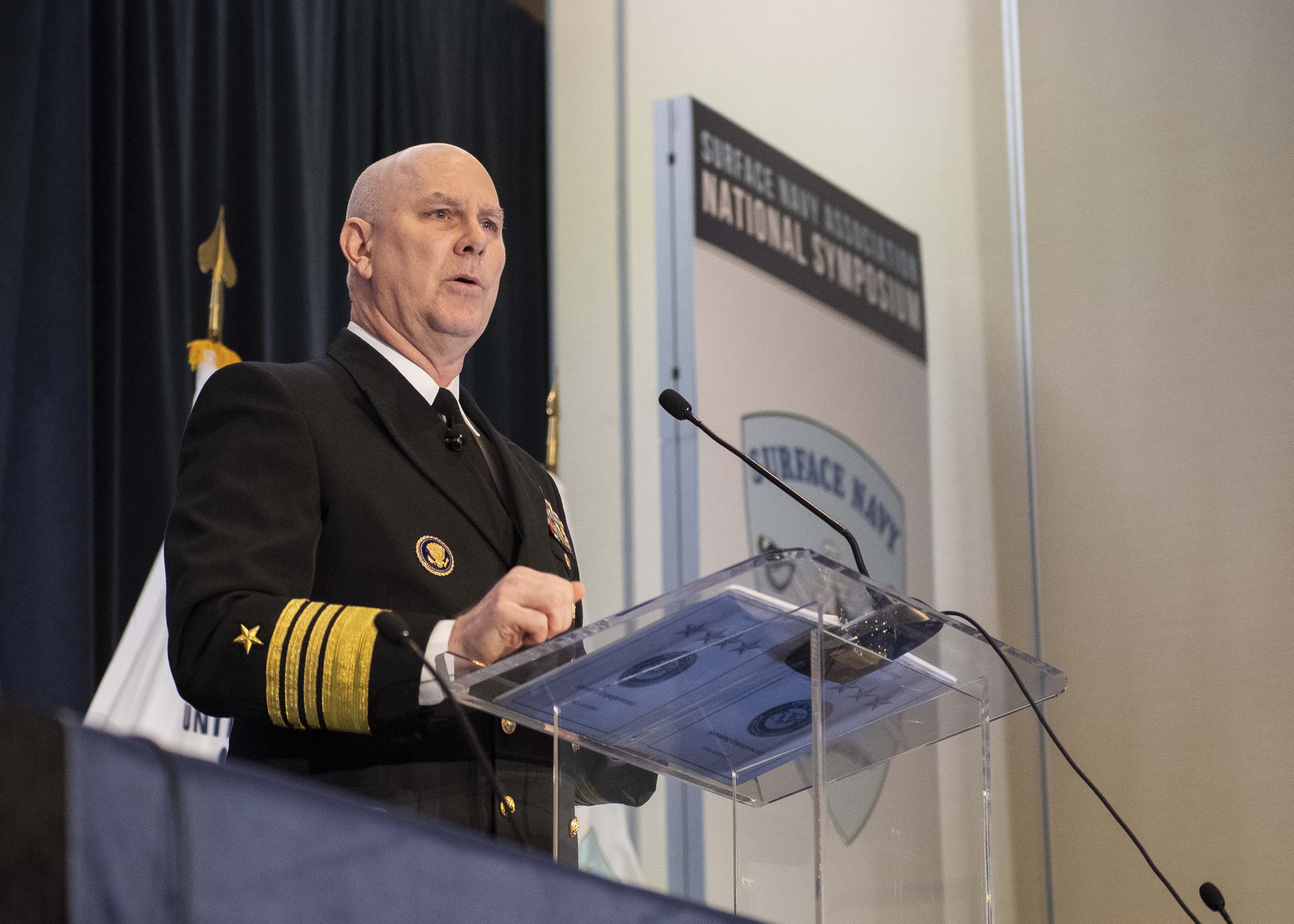
ARLINGTON, Va. – Balancing the desire to build the Navy the nation needs with the ability to fight with the fleet the nation has is at the core of the mission of U.S. Fleet Forces Command mission, its commander said on Thursday.
The Navy’s high-end warfare plan – dubbed Distributed Maritime Operations (DMO) – relies on fleet commanders considering future technologies, integrating new capabilities into existing systems and provided the right level of manning.
In the meantime, commanders need to fight with the equipment and manning they currently have, a task complicated by uneven funding levels Fleet Forces commander Adm. Christopher Grady said at the Surface Navy Association Symposium.
“Seventy five percent of the fighting force today will be what we fight with in 2030,” Grady said.
“We must sustain what we have now to defend our interests in the future.”
Grady said the demand for maintenance capability is outpacing the industrial base’s growth rate. At risk, he said, is the industrial base’s ability to build new ships while keeping current ships in operations.
“Right now, the industrial base is optimized for cost efficiency,” Grady said.
In an era of renewed great power competition the Navy and industrial base needs to rethink how to work some flexibility into how quickly shipbuilders and maintainers can adjust their operations, Grady said.
“At issue is how do we grow our capacity for both maintenance and modernization,” Grady said. “This is challenging.”
As an example, many of the critical parts the Navy relies on are from sole-source suppliers, Grady said. Then there are the firms that could bid on Navy projects but don’t because of various barriers making it difficult or impossible to submit competitive bids.
Since 2000 the entire defense industrial base lost more than 20,500 contractors, according to a Pentagon report released in September. The shipbuilding industry took a particularly hard hit and growing that sector is key to building the 355-ship fleet, the report said.
“Expanding the number of companies involved in Navy shipbuilding is important to maintaining a healthy industrial base that can fulfill the 355-ship fleet and support the Navy’s long-range shipbuilding plan,” the report said.
Changing how the industrial base and Navy interact is a critical part of solving the building and maintenance capacity issues, Grady said. He wants the Navy’s interaction with industry to seen as a partnership.
One example he proposed was buying portable dry docks that could be moved and leased to shipyards. More shipyards could bid on work by removing what Grady said is a significant barrier to entry into the marketplace – the significant capital investment required to handle Navy maintenance work.
“The ideal would be to come to the table and share notes,” Grady said. “What can we do for each other that’s good for the nation.”





